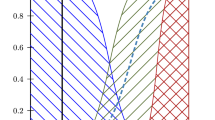Abstract
Nowadays for robots, the notion of behavior is reduced to a simple factual concept at the level of the movements. On another hand, consciousness is a very cultural concept, founding the main property of human beings, according to themselves. We propose to develop a computable transposition of the consciousness concepts into artificial brains, able to express emotions and consciousness facts. The production of such artificial brains allows the intentional and really adaptive behavior for the autonomous robots. Such a system managing the robot’s behavior will be made of two parts: the first one computes and generates, in a constructivist manner, a representation for the robot moving in its environment, and using symbols and concepts. The other part achieves the representation of the previous one using morphologies in a dynamic geometrical way. The robot’s body will be seen for itself as the morphologic apprehension of its material substrata. The model goes strictly by the notion of massive multi-agent’s organizations with a morphologic control.














Similar content being viewed by others
References
Atlan H (1995) Projet et signification dans les réseaux d’automates, le rôle de la sophistication. In: L’intentionalité en question. Vrin, Paris
Bertalanffy L von (1973) Théorie générale des systèmes. Bordas, Paris
Brooks R (1991) Intelligence without reason. In: Proceedings of the 1991 international joint conference on artificial intelligence, pp 569–591
Campagne J-C (2005) Systèmes multiagents et morphologie. PhD thesis, Université de Paris 6, septembre 2005
Cardon A (1999) Conscience artificielle et systèmes adaptatifs. Eyrolles, Paris
Cardon A (2004) Modéliser et concevoir une machine pensante. Vuibert, Paris
Cardon A (2005) La complexité organisée, Systèmes adaptatifs et champ organisationnel. Hermès-Lavoisier, Paris
Camus M, Cardon A (2005) Towards an emotional decision-making system. Second GFSC/IEEE WRAC 2005: workshop on radical agent concept, NASA Goddard Space Flight Center
Clarck A (1996). In: Penser l’esprit, des sciences de la cognition à une philosophie cognitive. Presses Universitaires de Grenoble, Grenoble, pp 105–111
Clergue G (1997) L’apprentissage de la complexité. Hermès, Paris
Dautenhahn K (1997) Biologically inspired robotic experiments on interaction and dynamic agent-environment coupling. In: Proceedings of workshop SOAVE’97, Ilmenau, pp 14–24, September 1997
Ferber J (1995) Les systèmes multi-agents. InterEdition, Paris
Freud S (1966) The complete psychological works of S. Freud. In: Strachey J (ed) The Hogarth Press, London
Heidegger M (1959) Qu’appelle-t-on penser. Presse Universitaire de France
Le Moigne J-L (1990) La modélisation des systèmes complexes. Dunod, Paris
Lesage F (2000) Interprétation adaptative du discours dans une situation multiparticipants: modélisation par agents. PhD thesis, Université du Havre, Décembre 2000
Mataric M (1995) Issues and approaches in design of collective autonomous agents. Robotics and autonomous systems 16:321–331
Meyer JA, Wilson WS (1990) From animals to animats: first conference on Simulation of adaptive behavior. MIT Press, Paris
Peirce CS (1984) Textes anticartésiens, C.S. Peirce, collection. In: Philosophie de I'esprit (ed) Aubier, Paris
Pitrat J (1993) L’intelligence artificielle: au-delà de l’intelligence humaine. In: De Béchillon D (ed) Le cerveau: la machine-pensée. L’harmattan, Paris
Ricoeur P (1990) Soi-même comme un autre. Seuil, Paris
Searle JR (1992) La redécouverte de l’esprit. Gallimard, Paris
Thom R (1972) Stabilité structurelle et morphogénèse. W.A. Benjamin INC, Reading
Vygotski LS (1985) Pensée et langage. Editions Sociales
Wilson MR, Cowan JD (1972) Excitatory and inhibitory interactions in localized population of model neurons. Biophysics J 12:1–24
Author information
Authors and Affiliations
Corresponding author
Additional information
Communicated by Gérard Sabah.
Rights and permissions
About this article
Cite this article
Cardon, A. Artificial consciousness, artificial emotions, and autonomous robots. Cogn Process 7, 245–267 (2006). https://doi.org/10.1007/s10339-006-0154-7
Received:
Revised:
Accepted:
Published:
Issue Date:
DOI: https://doi.org/10.1007/s10339-006-0154-7




